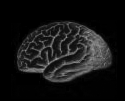
|
Associative Reinforcement Learning – Conditioning
- Pairing of two events will lead to associative learning when a reinforcement signal is presented.
- Positive reinforcement is a reward signal.
- Negative reinforcement is a punishment signal.
- When a sensory stimulus is paired with a reinforcement
signal, the neural circuitry will establish an
association between the sensory signal and the
reinforcement signal, thus learned to make the
connection between the stimulus and the reward/punishment.
- As a result, this leads to either seeking-behavior
(for reward) or avoidance-behavior (for punishment).
- Two events have to occur in proximity in time
for this conditioning to occur.
- Essentially, a correlation is made between the
sensory signal and the reinforcer by linking them
together in learning.
Supervised Learning – Learning with a "teacher" – Classical/Pavlovian
Conditioning
- Associative learning with the reinforcer presented
by an external source ("teacher").
- Learning is more directed since the pairing
between the stimulus and reinforcer are introduced
specifically by the "teacher".
Unsupervised Learning – Learning without a "teacher" –
Operant Conditioning
- Associative learning with the reinforcer introduced
accidentally by the animal itself (without a teacher).
- Learning often takes more time due to the accidental
coincidental encounters between the stimulus and
reinforcer.
Behavioral Science 101
- Under Construction

|

